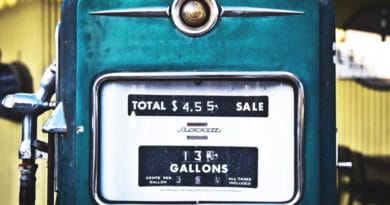COVID 19 devastates Iran
Alex Nouri is traveling to his native Iran after being away for a long time. He is sharing his observations about life in Teheran during the outbreak of the new coronavirus. Part two. Click here to read Part One.
By Alex Nouri
I have self-quarantined at home in Tehran for three weeks now. Iran was hit hard by Coronavirus at the end of February. Its epicenter is the city of Qom, the second most revered city for all Shiite Muslims. Qom is 90 miles southwest of Tehran.
The number of the affected and the dead sent shockwaves throughout the country. Satellite images show an increased number of graves being dug in Qom, Tehran, and Rasht, another badly affected city. As a result, the government has adopted a few measures to stop the rapid spread of the deadly virus.
All schools, universities, public parks, shopping malls, historic sites, and recreation centers have been closed now for one month and will remain closed for at least another month.
Bodies of the dead are doused in lime and given back to their loved ones after seven days. It is believed that lime prevents the spread of the virus in the early stages of decomposition. Since Muslims bury their dead usually within 48 hours, this policy is particularly painful to bear for families.
People have been asked to not visit cemeteries on weekends when they usually do. Also, an order mandates limiting the number of visitors in each group to only three. The most striking end result is attending funerals by a small group via the Internet, which most houses and even businesses still do not have and whose download speed is extremely slow averaging.
The government is urgently increasing its hospital bed capacity. This is being done organically inside some hospitals as well as retrofitting some large buildings into hospitals. For example, Iran Mall (www.iranmall.com), the biggest mall in Iran located on Tehran’s west side, was supposed to open in a few months. Instead, the owner has now converted it into a hospital with nearly 2,000 beds.
All government, non-essential retail businesses as well as all companies throughout the country, were ordered to close or face severe monetary penalties and be forced to close for one month. The closure has been in place for this entire week ended on Friday, April 3. (The week in Iran ends on Friday.) This policy alone has reduced vehicle and people traffic tremendously.
There is a nationwide ban on inter-city travel; entering into any city is allowed only if the vehicle’s license plate is issued from that city. Although some heavy traffic jams have been created on some major highways, this policy has significantly lowered the risk.
No one was allowed to drive their car on Thursday, March 31 and April 1, two major holidays back to back; March 31 is “The Republic Day” celebrating the establishment of the Islamic Republic of Iran, and April 1 is the 13th day of Farvardin, the first month of the solar calendar used in Iran. (Solar calendar starts at the beginning of Spring usually on either March 20 or 21.) People go out in masse on both days to picnics with family members to parks, lakes, and historic places. The fine for violators is nearly $500, a staggering amount in Iran that is equivalent to about one-fourth of an average monthly salary.
The above measures are harsh. But they save lives. Many believe the government publishes a vastly under-reported number of deaths. Regardless of what one may believe, such drastic measures are needed and indeed do save lives. Social distancing is extremely helpful. Fortunately, the government has the power to order and implement it nationwide and do it immediately.
Article by Alex Nouri, CPP, Author. Alex Nouri could be reached at info@myemail6.com




